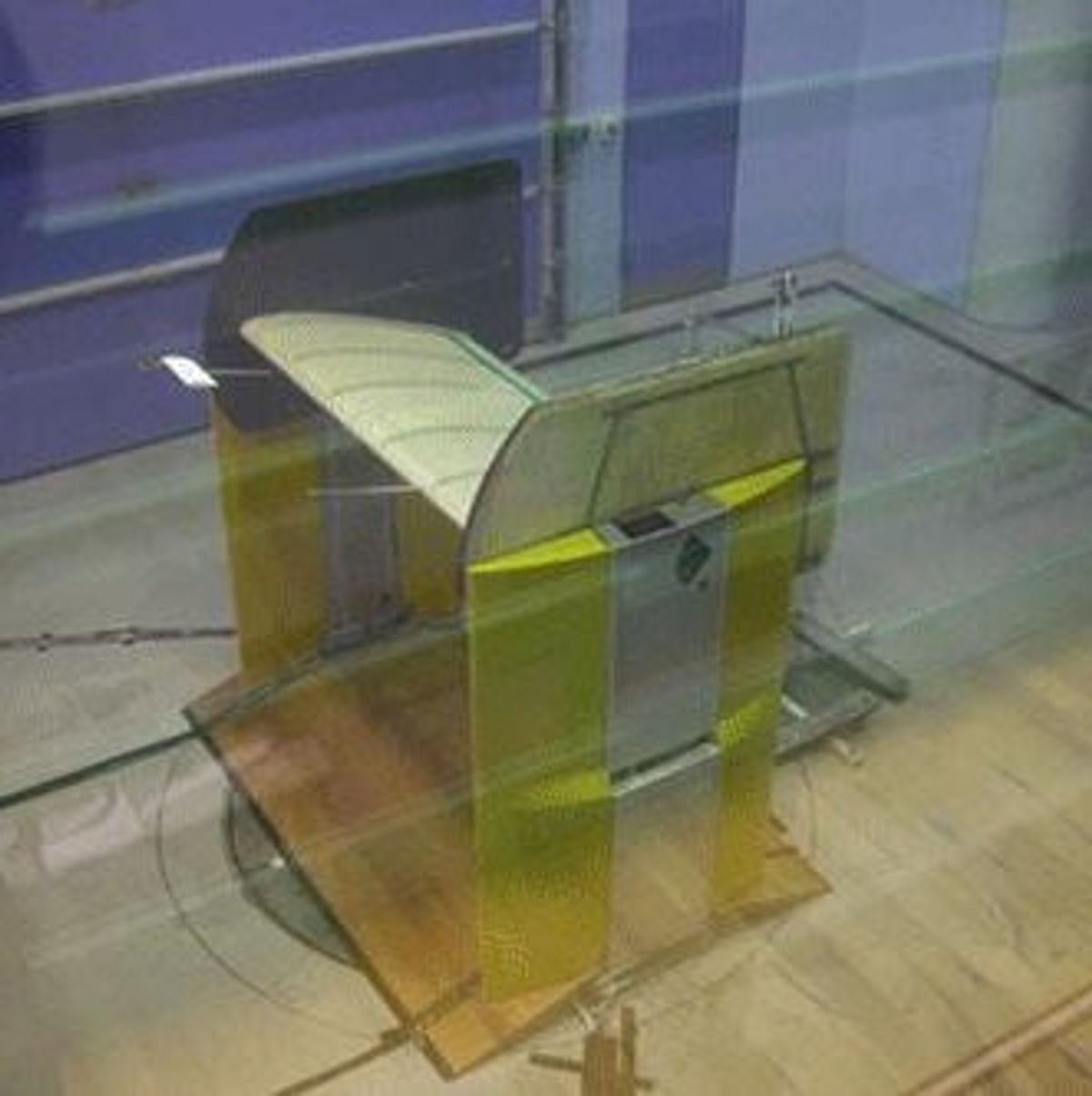By moving the flap in relation to the turbine blade using a pneumatic control system and sensors to determine wind speed and direction, the loads along the length of the blade can be balanced. Aside from the simple variability of wind speed there are also localized effects at wind farms due to turbulence from surrounding turbines. "It is these local influences which we hope our design will help mitigate," said Helge Aagaard Madsen, one of the project's researchers.
So far, the system has been tested on a small scale in a wind tunnel, but the researchers say it will soon be ready to scale up to a full size prototype.
"A further bonus of our design is that the moulded rubber trailing edge gives us a sharp edge which produces less noise and greater output," Madsen said. Most blades now are built as two pieces and fitted together, after which the edge's thickness is ground down.
The noise and turbulence produced by nearby wind turbines is always an issue in maximizing output of a wind farm, and reducing the loads using this type of flap system is only one way engineers are trying to mitigate those effects. A recent paper in the journal Renewable Energy attempts to optimize wind farm design with an algorithm for siting the turbines.
These types of efficiency measures, although individually probably without enormous effects on wind turbine and wind farm output, will undoubtedly help as wind power scales up around the world. After all, the U.S. National Renewable Energy Laboratory now estimates that the country has an overall capacity to generate 37 million gigawatt-hours of electricity annually from wind power, an amount that dwarfs the total U.S. energy consumption.
Image via Riso National Laboratory for Sustainable Energy.
Dave Levitan is the science writer for FactCheck.org, where he investigates the false and misleading claims about science that U.S. politicians occasionally make.




